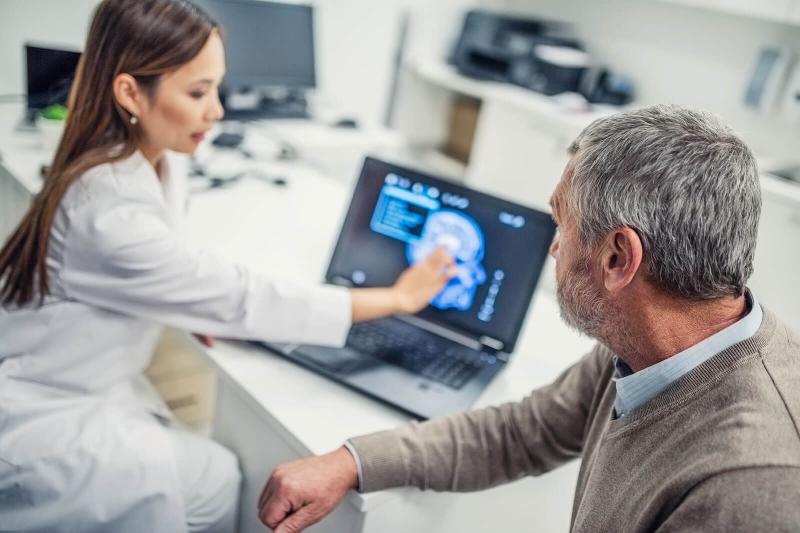- AdventHealth University

Radiation is often feared and misunderstood. An invisible, yet incredibly powerful, force of nature, radiation has been controlled and used for medical purposes like X-rays for over 100 years. However, people are understandably nervous about radiation, especially if they’re told they need radiation for medical reasons such as to investigate a breast lump or to monitor how a bone fracture is healing. Part of being a good imaging technologist or medical professional working with radiation is knowing the truth behind common myths. Here are four common radiation myths and the facts about them.
1. Myth: All Radiation is Bad
Fact: Radiation is all around you and is part of the natural environment. According to the U.S. Environmental Protection Agency (EPA), we are all exposed to radiation in many common ways. There is radiation in the soil in the form of radon. When we travel on a long airline flight, we are exposed to cosmic radiation. We also absorb radiation inside our bodies from the trace amounts found in the food and water we ingest.1 Various forms of radiation are safely used in a variety of applications, including food production, smoke detectors, cell phones, and even some light bulbs.
The unit of measurement for an effective radiation dose is the millisievert (mSv). According to The Radiological Society of North American (RSNA), the average person receives about 3mSv of radiation from their surrounding environment over the course of one year. By comparison, the average chest X-ray is the equivalent of seven days of radiation exposure, a dental X-ray is about one day of exposure, and CT scan of the head is about eight months of exposure.2 Imaging technologists and other radiologic professionals work to ensure patients are exposed to the least amount of radiation possible during any medical imaging scan that uses radiation.
2. Myth: Medical Scans Can Impact Fertility
Fact: The RSNA reports that the risk to fertility for men or women from radiological imaging such as X-rays and CT scans is essentially zero, and there are no known cases of infertility caused by these exams.2 Even so, since radiation accumulates in your body over the years, during x-ray exams and CT scans, you will wear a lead-lined apron to protect your reproductive organs and to reduce the amount of radiation you absorb.
3. Myth: Traditional X-Rays Are No Longer Necessary
Fact: X-rays remain the most common imaging test performed in the United States.3 There are thousands of X-ray machines in use in hospitals, medical and dental offices, and clinics. X-rays remain the best test to examine bone, tooth, and some soft tissue injuries. The routine use of X-rays as a diagnostic tool means there is a high demand for imaging technologists and is another reason why it is an exciting career choice.
4. Myth: Medical Radiation Will Make You Radioactive
Fact: According to the American Cancer Society (ACS), radiation therapy is one of the most common cancer treatments. During radiation therapy, radiation is used to kill cancer cells. Some normal cells are impacted as well. However, most healthy cells will return to their normal function in a relatively short period of time. Radiation therapy, unlike chemotherapy, is generally focused only on a tumor or cancer cells and does not travel throughout the body. But for some cancers, radiation therapy may be given orally or intravenously.4 Most often, the radiation used in radiation therapy is aimed directly at the tumor and does not spread outside that area, outside the body, or to anyone nearby.
Preparing For Patient Care
If you’re interested in a career as a radiologic technologist, you will work with patients who may believe one or more of these myths. They may approach your imaging room understandably nervous about their exam or procedure and its possible side-effects. An essential part of your job as an imaging technologist is to listen, understand your patients’ fears, and provide information to help them feel more comfortable with the process. That’s why it is so important to receive a superior education, one that provides the training you need to perform your job exceptionally well and provides access to experienced healthcare educators.
Learn more at AHU Online about the field of radiologic technology and discover if it’s the career for you.
Sources:
- “Radiation Protection,” United States Environmental Protection Agency, last modified November 2, 2017, https://www.epa.gov/radiation/radiation-sources-and-doses.
- “Radiation Dose in X-Ray and CT Exams,” Radiological Society of North America, last modified February 08, 2017, https://www.radiologyinfo.org/en/info.cfm?pg=safety-xray.
- “X-ray (Radiography) – Bone,” Radiological Society of North America, last modified January 20, 2018, https://www.radiologyinfo.org/en/info.cfm?pg=bonerad.
- “Radiation Therapy,” American Cancer Society, last modified February 10, 2017, https://www.cancer.org/treatment/treatments-and-side-effects/treatment-types/radiation/basics.html.


